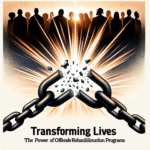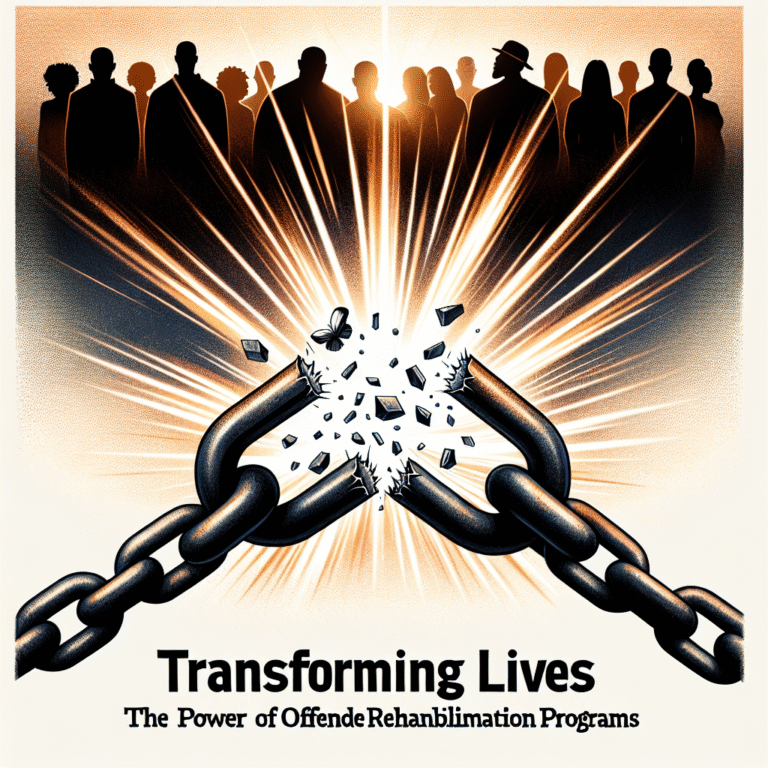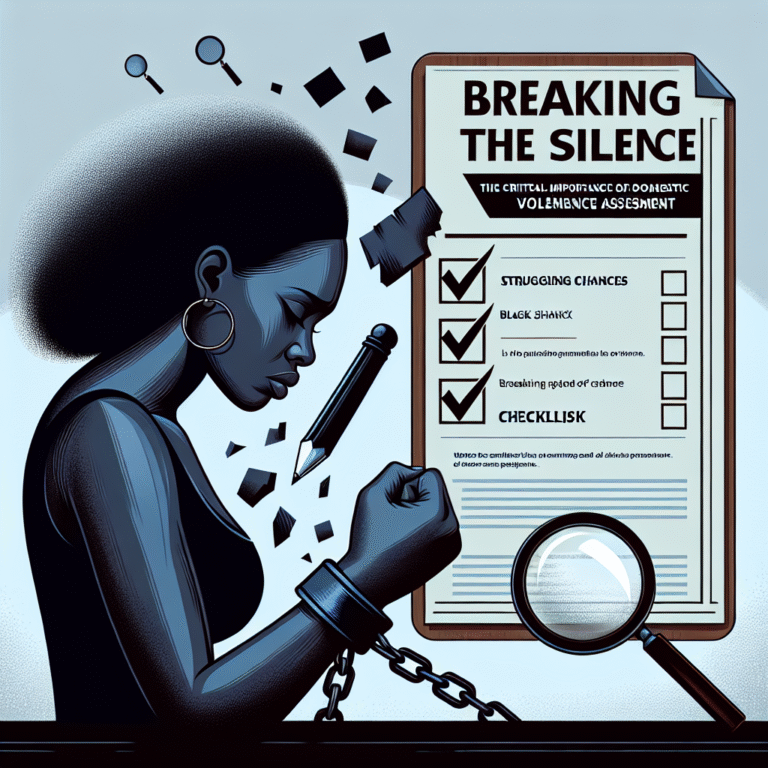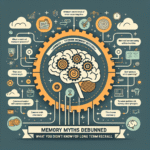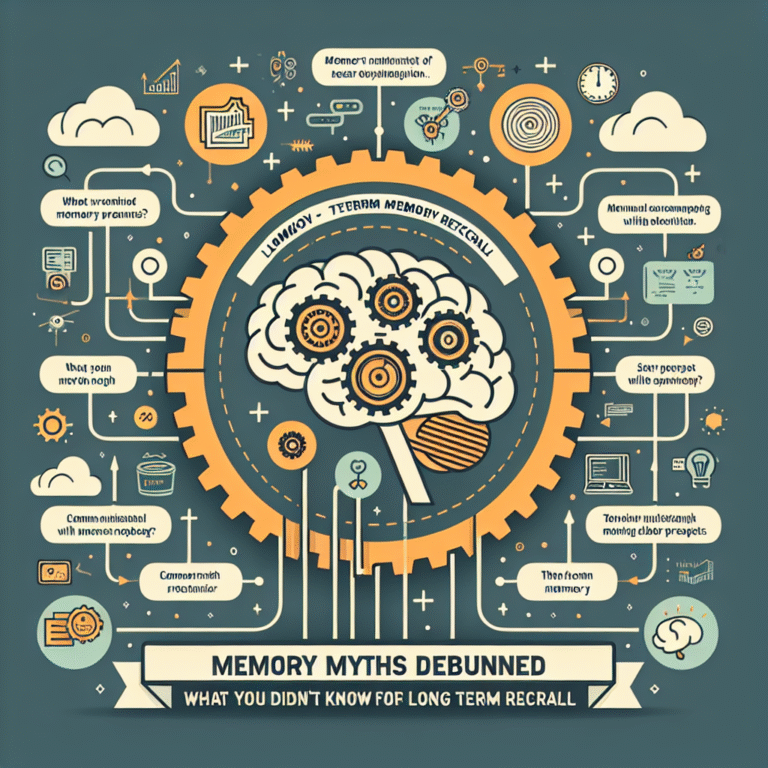
Introduction
In recent years, crime rates have ignited heated debates about justice, public safety, and societal reintegration. While the punitive approach to dealing with offenders has long dominated our criminal justice system, an emerging focus on rehabilitation has begun to reshape our understanding of effective crime prevention. Transforming Lives: The Impact of Effective Offender Rehabilitation Programs shines a spotlight on this vital shift, revealing how targeted interventions can not only reduce recidivism but also empower individuals to rebuild their lives. This article delves into the mechanics of these rehabilitation programs, sharing powerful case studies that illustrate their profound impact.
The Need for Offender Rehabilitation
Understanding Recidivism
Recidivism is a critical issue in our justice system, with statistics indicating that nearly two-thirds of released inmates are arrested again within three years. The cycle of re-offense and imprisonment perpetuates not only personal despair but also strains community resources and safety. To combat this trend, we must explore what works in reshaping lives and fostering successful reintegration into society.
Why Rehabilitation Matters
Rehabilitation is more than a buzzword; it serves as a crucial transformative process that equips individuals with the skills, support, and motivation to lead productive lives. Research consistently shows that effective offender rehabilitation programs can dramatically lower recidivism rates, save taxpayer dollars, and enhance community safety. As we unpack the landscape of rehabilitation, it becomes clear that it holds the key to transforming lives and communities alike.
Key Components of Effective Offender Rehabilitation Programs
1. Evidence-Based Practices
Implementing evidence-based practices is pivotal in ensuring a program’s success. Such approaches use data and research to guide interventions, aligning strategies with individuals’ specific needs. This tailored method leads to significantly higher outcomes in reducing recidivism.
2. Skill Development
From vocational training to educational programs, empowering offenders through skill acquisition is essential. These initiatives not only provide practical skills but also foster self-esteem, creating a sense of purpose. For instance, programs that offer trades training can lead to meaningful employment opportunities upon release.
3. Mental Health Support
Mental health services are a cornerstone of effective rehabilitation. Many offenders struggle with mental health issues, including substance abuse and trauma. Providing access to counseling and therapy can dramatically improve emotional stability, thus enhancing the chances of successful rehabilitation.
4. Support Networks
Establishing strong support networks is crucial for individuals transitioning back into society. Programs that involve families, former offenders, and community members can significantly reduce isolation and create a robust safety net for those reintegrating.
5. Continuous Monitoring and Feedback
Effective programs employ continuous monitoring to assess progress and adapt interventions as necessary. This responsive approach ensures that individuals receive the most suitable support throughout their rehabilitation journey.
| Component | Description | Impact on Rehabilitation |
|---|---|---|
| Evidence-Based Practices | Use of research to inform strategies | Higher success rates in reducing recidivism |
| Skill Development | Vocational and educational training | Empowers individuals with employment prospects |
| Mental Health Support | Counseling and therapy provided | Improved emotional well-being |
| Support Networks | Involvement of community and family | Reduces feelings of isolation |
| Continuous Monitoring | Ongoing assessment and feedback | Tailors support to individual needs |
Case Studies: Success Stories in Rehabilitation
Case Study 1: The Redemption Project
Overview: The Redemption Project in Los Angeles aims to provide comprehensive training and support for recently released individuals.
Outcome: With a focus on skill development and mental health support, the program reports a 70% success rate in preventing recidivism among participants over five years. This program highlights how holistic approaches can transform lives by addressing multiple dimensions of an individual’s experience.
Case Study 2: The Last Mile
Overview: This innovative program, originally launched in California, offers coding and technology training to incarcerated individuals.
Outcome: With an impressive 50% of participants securing jobs in the tech industry post-release, The Last Mile showcases how targeted vocational training can lead to meaningful employment and an enduring sense of purpose. This is a true testament to the impact of effective offender rehabilitation programs.
Case Study 3: The Inside-Out Project
Overview: This initiative partners university students with incarcerated individuals to engage in dialogue-based learning.
Outcome: Participants reported increased empathy, mutual understanding, and personal growth. By emphasizing human connection, the program has demonstrated that education can bridge the gap between society and offenders, paving the way for transforming lives.
Challenges in Implementing Rehabilitation Programs
Despite the promising evidence, several challenges inhibit successful implementation of rehabilitation programs:
Funding Limitations
Many effective programs face budget constraints, hindering their ability to offer comprehensive services. Advocacy for funding must focus on the long-term savings associated with reduced recidivism rates.
Societal Stigmas
Stigmatization of formerly incarcerated individuals can create barriers to successful reintegration. Public awareness campaigns can be instrumental in combating these misconceptions, promoting empathy and understanding.
Coordination Between Agencies
Fragmented systems often impede the coordination necessary for effective rehabilitation. Collaboration between justice systems, educational institutions, and community organizations is essential to streamline support for offenders.
The Role of Community in Rehabilitation
Building Inclusive Environments
Communities play a crucial role in shaping the success of offender rehabilitation. Initiatives that foster inclusive environments allow former offenders to feel welcomed, breaking the cycle of isolation.
Engaging Faith-Based Organizations
Faith-based organizations can provide remarkable support networks, often stepping in with resources and volunteer services. Their involvement can create a sense of belonging and purpose, which is essential for transforming lives.
Conclusion
Transforming Lives: The Impact of Effective Offender Rehabilitation Programs is a powerful narrative that illustrates the importance of rehabilitation in the criminal justice system. By focusing on evidence-based practices, holistic support, and community engagement, we can witness sustainable change not only within individuals but also across society as a whole.
As we move forward, it is crucial for policymakers, communities, and advocates to prioritize and invest in these programs. Together, we can strive for a justice system that restores lives, rather than merely punishing crime.
FAQs
What are the key components of effective offender rehabilitation programs?
- Key components include evidence-based practices, skill development, mental health support, support networks, and continuous feedback.
How do rehabilitation programs reduce recidivism?
- By addressing underlying issues like mental health and skills deficits, rehabilitation programs provide offenders the tools they need to succeed post-release.
Can community involvement improve rehabilitation outcomes?
- Yes, community support fosters a sense of belonging and helps reduce stigma, making reintegration smoother for offenders.
What types of vocational training are most effective for offenders?
- Trades and technology training have shown promising results, offering practical skills that lead to employment.
- How can we combat the stigma surrounding formerly incarcerated individuals?
- Public awareness campaigns can help reshape perceptions and promote understanding within communities.
Let’s champion effective rehabilitation programs and continue to explore ways to transform lives, ensuring each individual has the opportunity to thrive.

